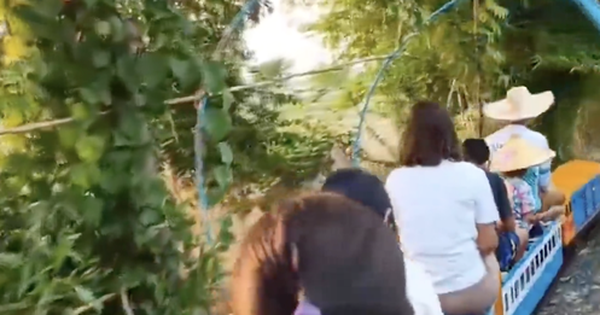LTS: Scott Ritter is a former intelligence officer with the US Marine Corps and the author of a book on US nuclear weapons policy. He was active in the Soviet Union as an inspector for the implementation of the Long-Range Nuclear Forces Treaty, served on the General Staff of General Schwarzkopf (USA) during the Gulf War, and from 1991-1998 served United Nations arms inspector. VOV Electronic Newspaper would like to introduce to you the translation of this expert’s article:
Evaluation of US Central Intelligence
The director of the US Central Intelligence Agency (CIA) William Burns has attracted attention recently when answering a reporter’s question about the threat posed by Russian nuclear weapons in the context of the military conflict. place in Ukraine.
“Given the potential desperation of President Putin and the Russian leadership, given the setbacks they have faced so far militarily, none of us can take the threat lightly,” Burns said. threat from the possibility of using tactical nuclear weapons or nuclear weapons of low yield”.
These statements of the director of the CIA are excerpted from documents published by Ukraine and American and Western media. According to the document, Russia has suffered serious setbacks in Ukraine and is desperately trying to save its military situation on the battlefield.
Russia has denied the above assessment, saying that its “special military operation” in Ukraine is proceeding as planned, has entered phase 2, with content focusing on destroying military forces. the Ukraine in and around the Donbass area.
Director Burns himself was unable to provide concrete evidence to support his claims about Russia’s possible use of nuclear weapons in Ukraine.
These “concerns” of Mr. Burns were highlighted by Ukrainian President Zelensky and brought to the world’s attention when he answered a question asked by a CNN reporter about the possibility that Russia would use nuclear weapons in Ukraine. . Zelensky replied: “We should not wait until Russia decides to use nuclear weapons. We have to be prepared for that situation.”
Comments from Russia
Russian Foreign Minister Lavrov rejected Mr. Zelensky’s interpretation of CIA Director Burns’ assessments.
Mr. Lavrov noted that the US and Russia in the June 2021 summit between Presidents Biden and President Putin reaffirmed the Cold War-era understanding, that “nobody wins in a war.” nuclear war” – this declaration was also adopted by the 5 permanent members of the United Nations Security Council (Russia, USA, China, France, UK) in January 2022. Lavrov emphasized the fact that this declaration is still in full force and that Russia will only use conventional weapons in Ukraine.
The statements made by Mr. Burns and Zelensky are probably part of an overall communication strategy to create a different image of Russia, seeing its arsenal as an existential threat to world peace.
Russia and especially leader Putin have made it clear about the reality of capacity nuclear deterrence of Russia. President Putin warned the US, NATO, and the EU not to intervene directly in Ukraine. “Anyone who tries to interfere with us, and even more so, to pose a threat to our country, our people, should know that Russia’s response will be immediate,” he said. and lead you to consequences you have never experienced in your own history.”
Then, President Putin reacted even more sharply to what he called the “unfriendly” actions of “Western countries” before the military campaign in Ukraine.
Putin said during a meeting with his top officials: “It is not only the Western countries that are carrying out unfriendly actions against our country in the economic field, the top officials of the major NATO countries have made bold statements towards our country.
Putin then directed Russian Defense Minister Shoigu and the country’s Chief of General Staff, Gerasimov, to put Russia’s nuclear deterrent in a “special state of combat readiness.”
Anti-Russian critics in the West say that Putin’s decree is an order to raise the combat readiness level of Russia’s nuclear arsenal. However, the reality can be much different. President Putin’s order is most likely simply to increase the level of command and control communication related to Russia’s strategic nuclear forces, not to change the level of readiness. combat of the frontline nuclear units.
The essence of Russia’s principle of nuclear deterrence
The West’s overreaction to any news about Russia’s nuclear stockpile shows a significant lack of understanding of Russia’s position and the circumstances under which nuclear weapons could be used.
But Russia has published its “Fundamentals” of its nuclear deterrence policy in which it explains its nuclear warfare policy.
The “Fundamentals” specify that nuclear weapons should be viewed “purely as a means of deterrence,” and that its use can only take place as an “extreme and mandatory measure.” “.
Russia’s strategic nuclear forces are organized to retaliate when Russia suffers a nuclear attack. These forces are designed to inflict “certain and unacceptable harm” on any potential adversary. In short, any country that suffers a retaliatory nuclear blow from Russia will cease to exist as a modern state with a functioning society.
The Russian document states that Russia will launch nuclear weapons if it receives “reliable data about the launch of ballistic missiles that hit the territory of Russia or its allies”. Russia would also retaliate if nuclear weapons were used against Russia or its allies.
The document also outlines two non-nuclear scenarios where Russia still responds with nuclear weapons. Scenario 1: An adversary’s attack on key Russian governmental and military positions, the disruption of which would undermine the nuclear force’s response . Scenario 2: An invasion of Russia with conventional weapons that threatens the very survival of the Russian state.
Russian Foreign Minister Lavrov, in a statement to the Indian press, said that none of the situations mentioned in the “Fundamentals” document apply to the current situation in Ukraine.
Unexpected developments
However, this does not mean that the conflict in Ukraine did not lead to nuclear “warming” in Europe. In Sweden, support for NATO is growing. Finland is likely to apply to join NATO within a few weeks.
If the US-led NATO expands into these two countries (Sweden and Finland), that could be the reason for a potential military response from Russia, or at least an increased concentration of troops. Russia.
According to Dmitriy Medvedev, an adviser to President Putin on national security issues, if Sweden or Finland join NATO, “it will no longer be possible to talk about any non-nuclear status of the Baltics. – equilibrium must be restored”.
The story of Sweden or Finland joining NATO emerged shortly after the bloc coordinated internally to deploy nuclear-capable F-35A fighters.
Jessica Cox, director of the NATO Nuclear Policy Department in Brussels, stated recently: “We are moving rapidly towards our goal of modernizing the F-35 and integrating these aircraft into our planning and operations… By the end of this decade, most if not all of our allies will have switched to the F-35.
The F-35A fighter model was confirmed to have nuclear capabilities in October 2021. The aircraft tested using the B-61 nuclear bomb.
The US maintains about 150 B-61 nuclear bombs in various depots across Europe. These weapons are intended for use by the United States and non-nuclear members of NATO.
Cox noted that other NATO allies that currently operate the F-35, such as Poland, Denmark, and Norway, could be called upon to support future NATO nuclear sharing missions.
Finland recently announced that it intends to buy 60 F-35As – a move that really worries Russia because Finland wants to join NATO.
Russia considers the widespread use of the F-35A by the US and NATO air forces to conduct “Baltic air patrols” over Latvia, Estonia, and Lithuania as a serious threat, in the context of each F-35A. The -35A can be seen as a potential nuclear threat.
Meanwhile, Russia’s “Fundamentals” lists “deployment of nuclear weapons and launch vehicles on the territory of non-nuclear countries” as one of the scenarios for Russia to implement “neutralization by enforcement.” nuclear deterrence”.
It is possible that Russia does not intend to use nuclear weapons to achieve its goals on the territory of present-day Ukraine. But NATO’s military moves could lead to that undesirable situation.
at Blogtuan.info – Source: Soha.vn – Read the original article here



